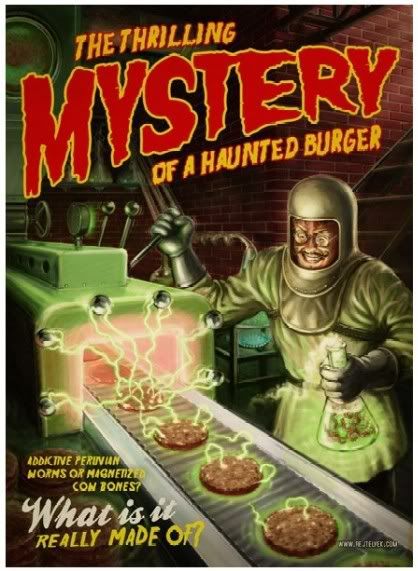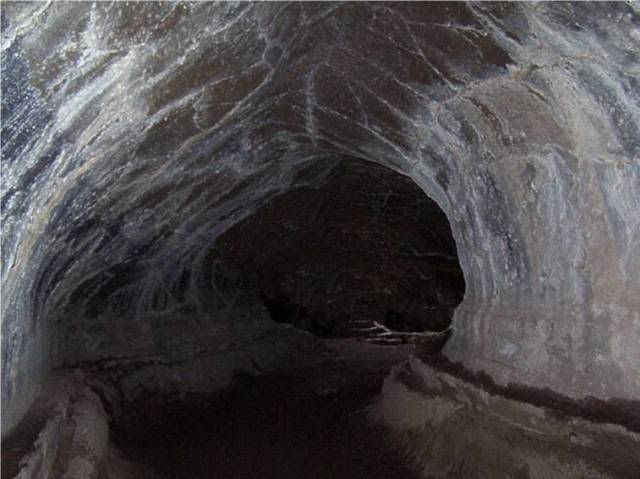
PICTURE



According to Dr. Karen Weatherby, a gerontologist and author of the study, gawking at women’s breasts is a healthy practice, almost at par with an intense exercise regime, that prolongs the lifespan of a man by five years. (This is going to give a whole new depth of meaning to "exercise buddy".)

She added, "Just 10 minutes of staring at the charms of a well-endowed female, is roughly equivalent to a 30-minute aerobics


At the close of the study, the researchers noted that the men who stared at the breasts of females on a regular basis exhibited lower blood pressure. (All the wasted money spent on blood pressure pills, if I had only known.)(My by-bass was so unnecessary!!)
Sexual desire linked to better blood circulation
The researchers declared that sexual desire gives rise to better blood circulation that signifies an overall improved health. (So suddenly we went from staring at a woman's breast, one of the most wonderful works of art ever created, to having full blown [no pun intended] sexual desire? They must have edited out some of the study.)
Weatherby explained the concept stating, "Sexual excitement gets the heart pumping and improves blood circulation. There's no question: Gazing at breasts makes men healthy. (My bypass was so unnessary!)

(OH OH!! Another study!! Who has the grant forms? Question: Are short men healthier than tall men?)
"Our study indicates that engaging in this activity a few minutes daily cuts the risk of stroke and heart attack in half. We believe that by doing so consistently, the average man can extend his life four to five years." (I personally think that doing what Dr. Weatherby suggests could lessen a man's life time four to five years, takes a lot of energy out of you to recover from severe beatings.)

In addition, she also recommended that men over 40 should gaze at larger breasts daily for 10 minutes. (Why men over 40? and why larger breasts? Not everyman likes larger breasts, most men like all breasts!! Geez, I think I could have done a more scientific study!!)

The German research is believed to be published in the New England Journal of Medicine. (Believed to be??)
Just not the same healthy feeling is it???

 Her new album
Her new album

Researchers in the Netherlands created what was described as soggy pork and are now investigating ways to improve the muscle tissue in the hope that people will one day want to eat it.
No one has yet tasted their produce, but it is believed the artificial meat could be on sale within five years.

Mark Post, professor of physiology at Eindhoven University, told The Sunday Times: “What we have at the moment is rather like wasted muscle tissue. We need to find ways of improving it by training it and stretching it, but we will get there.

“This product will be good for the environment and will reduce animal suffering. If it feels and tastes like meat, people will buy it.
“You could take the meat from one animal and create the volume of meat previously provided by a million animals.”

The project is backed by the Dutch government and a sausage maker and comes following the creation of artificial fish fillets from goldfish muscle cells.
Meat produced in a laboratory could reduce greenhouse gas emissions associated with real animals.
Meat and dairy consumption is predicted to double by 2050 and methane from livestock is said to currently produce about 18 per cent of the world’s greenhouse gases.

Animal rights group Peta said: “As far as we’re concerned, if meat is no longer a piece of a dead animal there’s no ethical objection.”

However the Vegetarian Society said: “The big question is how could you guarantee you were eating artificial flesh rather than flesh from an animal that had been slaughtered.
“It would be very difficult to label and identify in a way that people would trust.”

(Did anyone else start thinking of that classic Charlton Heston movie, SOYLENT GREEN as you were reading this??)
I do not think there are many things that are as powerful and as moving as massed voices. I came across these young men when searching for music from The Mississippi Mass Choir. I hope you enjoy it as much as I have. The first part is showing the parts of the song, the second is the entire Choir singing, the change in energy and power that is felt is overwhelming! You cannot help but smile. I hope you feel recharged and energized as I did. Heather, consider this an early Happy Birthday from the Homeland. Enjoy.
(Following entry from the Wikipeida Encyclopedia)
Shosholoza is a traditional Southern African folk song. The song was traditionally sung by all-male work gangs in a call and response style.
The song has been recorded by a variety of artists, including Helmut Lotti, Ladysmith Black Mombazo, PJ Powers, The Glue, Soweto Gospel Choir, and Peter Gabriel, as well as being a standard of most gumboot bands. The song gained further popularity after South Africa won the 1995 Rugby World Cup, and is a favourite at sport events in South Africa.
The Zulu word Shosholoza means go forward or make way for the next man, and is also reminiscent of the sound made by the steam train (stimela) described in the song. The song has also given its name to Team Shosholoza, the first African challenger for the America's Cup, and to Shosholoza Meyl, the long-distance passenger train service operating in South Africa.
The lyrics of the song vary, as do the transcriptions. Here is one example:
A rough translation:
The original version has the country name Rhodesia instead of South Africa, since this song was sung by migrant labourers from Rhodesia (now Zimbabwe) travelling on the train down to the mines in the Transvaal.










Using models developed to calculate the effects of more plausible pandemics, the team from the University of Ottawa have discovered that unless man struck back quickly and aggressively then they would be doomed.

The scientific paper, which is published in a book “Infectious Diseases Modelling Research Progress”, (The Study is at this link, it is a PDF file: P. Munz, I. Hudea, J. Imad and R.J. Smith? When zombies attack!: Mathematical modelling of an outbreak of zombie infection (Infectious Disease Modelling Research Progress 2009, in: J.M. Tchuenche and C. Chiyaka, eds, pp133-150). --JohnOh) looks at an attack by the undead creatures, who infect the living with a bite.

In their study, titled When Zombies Attack!, the researchers picked “classic” slow-moving zombies such as those in Dawn of the Dead as models and divided humanity into three: the living, zombies and the “removed” – zombies who had been killed by decapitation.
They concluded there was no point trying to cure those infected or live with them - the best thing was to destroy them as quickly as possible.
“A zombie outbreak is likely to lead to the collapse of civilisation, unless it is dealt with quickly,” they write in the book:

“While aggressive quarantine may contain the epidemic, or a cure may lead to coexistence of humans and zombies, the most effective way to contain the rise of the undead is to hit hard and hit often.

“As seen in the movies, it is imperative that zombies are dealt with quickly, or else we are all in a great deal of trouble.”

Joe Imad, the study's co-author, said: “If you look at it in a more realistic way, zombies are about the same as any other major infectious disease, they get out and we try to eliminate them.
“Modelling zombies would be the same as modelling swine flu, with some differences for sure, but it is much more interesting to read.”

Shades of JURASSIC PARK!!! At the face this is just fascinating, and shows just how tenacious life is. But I cannot help but wonder if a bacteria that could be extremely harmful could also be activated. As that great Greek philosopher Anonymous, said thousands of years ago. "Just because you are paranoid, does not mean they are not out to get you."

PREHISTORIC YEAST REBORN IN MODERN BEER
ERIC BLAND; Discovery News
Sept. 23, 2008, Discovery News Channel -- Trapped inside a Lebanese weevil covered in ancient Burmese amber, a tiny colony of bacteria and yeast has lain dormant for up to 45 million years. A decade ago Raul Cano, now a scientist at the California Polytechnic State University, drilled a tiny hole into the amber and extracted more than 2,000 different kinds of microscopic creatures.

Activating the ancient yeast, Cano now brews barrels (not bottles) of pale ale and German wheat beer through the Fossil Fuels Brewing Company.
"You can always buy brewing yeast, and your product will be based on the brewmaster's recipes," said Cano. "Our yeast has a double angle: We have yeast no one else has and our own beer recipes."

The beer has received good reviews at the Russian River Beer Festival and from other reviewers. The Oakland Tribune beer critic, William Brand, says the beer has "a wierd spiciness at the finish," and The Washington Post said the beer was "smooth and spicy."
Part of that taste comes from the yeast's unique metabolism. "The ancient yeast is restricted to a narrow band of carbohydrates, unlike more modern yeasts, which can consume just about any kind of sugar," said Cano.

Eventually the yeast will likely evolve the ability to eat other sugars, which could change the taste of the beer. Cano plans to keep a batch of the original yeast to keep the beer true to form.
If this has a ring of deju-vu, it could be because Cano's amber-drilling technique is the same one popularized in the movie Jurassic Park, where scientists extracted ancient dinosaur DNA from the bellies of blood-sucking insects trapped in fossilized tree sap.

Cano's original goal was to find ancient microscopic creatures that might have some kind of medical value, particularly pharmaceutical drugs.
While that particular avenue of research didn't yield significant results, the larger question of how microscopic creatures survived for millions of years could help scientists understand certain diseases, said Charles Greenblatt, a scientist at Hebrew University in Jerusalem who studies ancient bacteria.

"We've got cases of guys who contracted [tuberculosis] during World War II and lived with it for 60, 70 years," said Greenblatt. "Then suddenly they get another disease, the TB wakes up from its dormancy and kills them."
Inducing dormancy could be a new way to fight disease and infection, said Greenblatt. Instead of outright killing infectious creatures, doctors could instead put them to sleep. The infection would still be present in the patient's body, but it wouldn't hurt the patient.

Neither Cano nor Greenblatt can say what the upper limit for hibernating yeast or bacteria is; it could be hundreds of million years. But while other scientists work on that, Cano plans to spend his time tossing back a few cold ones, and hoping others will too.
"We think that people will drink one beer out of curiosity," said Cano. "But if the beer does taste good no one will drink a second."
